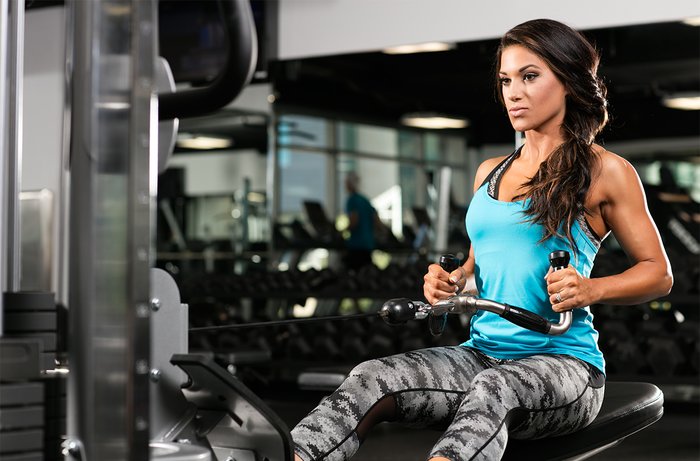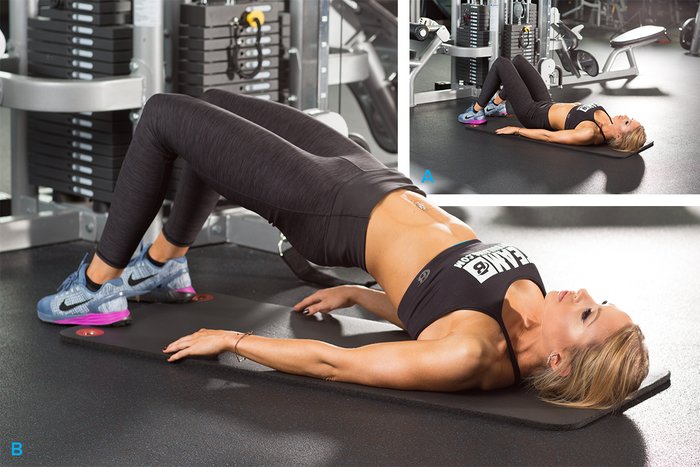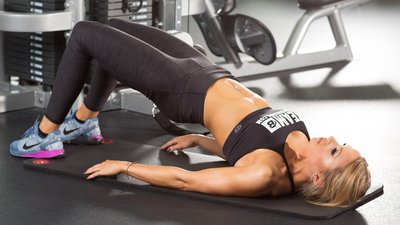A few years ago, I remember having to craft a creative and enticing argument just to get my clients to try squatting or deadlifting. Fast forward to today, and I'm being approached left and right by people asking me to help them improve their squat and deadlift technique. Boy, how times have changed!
Today, it seems like everybody and their grandmother are focusing on the big three movements. And although the compound movements should be a staple in any barbell strength program, they're not all you need. Like any movements, the squat, bench, and deadlift strengthen some muscles but ignore others. If they're all you do, they can create strength gaps and muscular imbalances, leaving you immobile and potentially injured.
Fortunately, there's a solution: accessory lifts. Here are three reasons you need to prioritize accessory work, and how to accessorize the big three!
Benefit 1. Reduced Risk Of Injury
If you're like most lifters, you probably devote a lot more of your weekly volume to pressing than pulling. Between bench press, dumbbell or incline dumbbell press, overhead pressing, and maybe a few quick sets of push-ups you do before going out Friday night, your shoulders, chest, and tris are getting plenty of stimulation.
As a result, you may have impeccable pecs and front delts, but your shoulders may be tight and rounded forward, and you may struggle with some form of impingement, usually characterized by the pinch you feel or small click you hear while pressing.
So what's the answer? It's right behind you: Your back!

The trick to happy shoulders in the long term is simple: Correct the imbalance by increasing your accessory back (pulling) work to match or exceed your pressing movements. Upping the number of rows, pull-ups, and face pulls you include throughout the week will do wonders for your shoulder health, posture, and performance, and it will help balance out your physique.
How to do it: Personally, I like to think of it in terms of reps. Aim for a 3:2 ratio of pulling to pressing repetitions throughout the week. For example, 30 total reps of pressing would demand at least 45 reps of upper-body pulling.
Benefit 2. Enhanced Mobility And Better Form
Squats are heralded as the king of leg exercises—and for good reason! They recruit a significant amount of muscle mass, allow you to use ultra-heavy loads, and they build mental strength. However, neglecting to hit the legs with enough variety and focus on other muscle groups can lead to disastrous hip mobility—and disastrous squat form.
Couple this with the fact that you spend most of your day sitting down, and you're left with hip flexors tighter than a pair of undersized yoga pants. This brings with it a slew of issues including poor hip mobility, anterior pelvic tilt, an under-active anterior core, and potentially serious low-back discomfort. No thanks.
Fortunately, a few accessory movements can do wonders for those tight hips of yours. I am a big fan of supersetting hip-mobility accessory work with your squats to help keep your hips open and loose. Doing some glute-activation drills before squatting or deadlifting can also help to turn on your sleepy glutes, ensuring that they do their job during the big lifts (bueno) rather than your lower back taking over (no bueno).
How to do it: Do glute bridges in your warmup, or even as daily self-care. The half-kneeling tailbone tuck is also one of my favorite exercises to do between sets or even as a warmup.
Benefit 3. Reduced Muscular Imbalances
As powerlifting has become more popular, strength has become the new six-pack. Which is great, if the exercise program is well-balanced. But often, it's not. In a hyperfocused effort to improve the squat, bench, and deadlift, people will train nothing but these exercises, and as a result, develop some dramatic muscular imbalances.
One aesthetic imbalance that's all too common: thunder thighs in the front, and ha-ha hamstrings in the back. If you have monstrous quads and puny hamstrings, it looks strange, but beyond that, it can contribute to sore knees and anterior pelvic tilt (read: back pain and hip pain). Yes, squats can do more than just about any other move to build a physique that looks and lifts strong. But they need help!
How to do it: Prioritize accessory work that hits your physique where the big lifts don't. Hit your hammies with squats, your anterior core with deadlifts, and your upper and mid-back with bench presses. In regard to the hamstrings, lifts like RDLs, hamstring curls, kettlebell swings, and single-leg deadlifts all fit the bill.
Gear Up For The Big Three
How To Accessorize Your Workout
The best accessory lift for you may not be the best accessory lift for your workout partner, or for me. The best accessory lift for you will address your particular weak spots—whether that be a strength or muscle imbalance, flexibility, or a mobility issue.

Glute Bridge
A set of educated eyes and a movement screen can be invaluable, but to start the conversation, here are the most common accessory exercises I use alongside each of the big three barbell lifts.
Squat
Bench
Deadlift
- Hollow rock/hollow body hold
- Crocodile breathing
- Deficit deadlift
- Block pull/rack pull
- Weighted carry
How To Program Your Accessory Work
Before The Main Lift (1-5 accessory movements)
Use the warmup to your advantage. Mobility and muscle-activation drills are a great way to get an early start on your accessory exercises. Plus, they'll get you ready to dominate your main lift, help improve mobility, and help correct imbalances.
I'll often work things like crocodile breathing, glute bridges, and external rotation into the warmup. Adjust your warmup based on your workout that day.
With The Main Lift (0-1 accessory movement)
Between sets of your main lift are also great times to do some nonstrenuous accessory work. I recommend doing something that will help with stability or relieve overly tight muscles.

Deadlift
Be sure to keep these simple. You want your main lift to be your focus, so don't tire yourself out. Supersets that include accessory exercises like dead bugs, hollow body holds, and band pull-aparts are often a great fit.
After The Main Lift (4-6 accessory movements)
Depending on your goals and needs, select 4-6 accessory exercises that will help you correct muscle imbalances, increase mobility, or improve aesthetics.
Usually, exercises like hip thrusts, kettlebell swings, block pulls, weighted carries, pull-ups, and bent-over rows work well here. If you've got one hour to lift, you should be spending at least 31 minutes on this sort of work.
Don't just bro out for 60 minutes, or you'll end up bro-ken!

